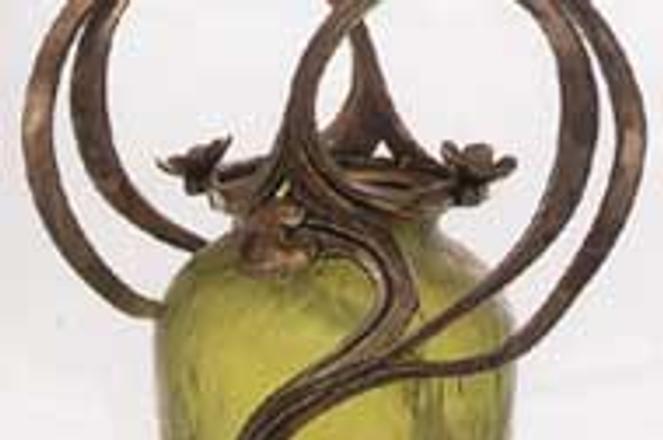The Vase (1900), a work of French decorative art at the Mirbach Palace.photo: Courtesy of Mirbach Palace
'The Wonder of the Curve '. Mirabach Palace, Františkánske námestie 11, Tel.: 54 43 15 56. Open daily except 10:00-18:00. Ends September 5.
At the beginning of the century, when Bratislava was a provincial city in the northern part of Austria-Hungary empire, its wealthiest households prided themselves on furnishing in the latest "art nouveau" or secessionist style.
The fine furnishings and art they used in their homes can be seen in a new exhibition at the Slovak National Gallery, The Wonder of the Curve. In the exhbit, the curators try to both link Slovakia to the larger art nouveau tradition in central Europe and also show more generally what this all-at-once flowery and linear style was all about.
For the first time, the exhibition held by Auction Company SOGA and City Gallery of Bratislava presents secession style through public and private collections of furniture, glass and decorative ceramics, paintings and drawings from Slovakia as well as from abroad.
The small exhibition shows 68 masterpieces who from people like Mikuláš Galanda, a Slovak painter whose illustrations from Hárman Magazine are dated 1919. There are a few works by renowed Austrian painter Egon Shiele. The secession style is shown through the typical motifs of flowers and plants on decorative ceramics or furniture while the "woman" motive can be seen in magazine drawings, paintings or on vases. The broad range and shallow depth of the collection deliver an uncertain curatorian message. It is unclear if the curators are asserting that Slovakia had a unique succession style, or if the point is that its patrons blended in well with the more general tradition.
The second part of exhibition presents Slovak artists influced by the secession style. The artists include modernist Ladislav Mednyánszky, Konštantín Kovari-Kačmarik, Martin Benka Ján Koniarek and Ľudovít Mack.
Overall, the show's success is mixed. While much of the work on its own is beautiful, there is too little shown in this exhibit to teach much of anything.
-Soňa Bellušová


